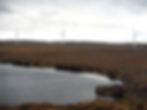Peatland ACTION

Eroding peatland in the Outer Hebrides
Peatlands are one of Scotland’s largest degraded ecosystems, it is estimated between 50-80% of our peatland is in a degraded or eroding condition. When peatlands are degraded the benefits they bring are lost, in fact they become sources of carbon instead of sinks – contributing to climate change rather than mitigating it.
The Peatland ACTION project is helping to restore damaged peatlands in Scotland. Since 2012, over 25,000 hectares have been put on the road to recovery with funding provided by the Scottish Government. Peatlands in good health are valuable and have many benefits to us all.
The true worth of our peatlands is becoming increasingly recognised. As stores of carbon they are important in tackling climate change and as the basis of rural farming, sporting, tourism and crofting they are vital to the economy. They also play a role in flood regulation, water quality and support nationally and internationally important biodiversity.
Restoring peatlands is one of the most effective ways of locking in carbon; offering a clear nature-based solution to the climate crisis. Peatland restoration can also play a key role in Scotland’s green recovery, by supporting the rural economy through the creation and development of land-based jobs and skills across Scotland.
Peatland ACTION Project Officers have played a pivotal role in the success of the project across Scotland,
Urras Oighreachd Chàrlabhaigh have had a Peatland ACTION Project Officer in-post for several years who has developed substantial expertise in advising on peatland restoration across the Outer Hebrides.
Funding Opportunities
One of the strengths of Peatland ACTION has been to work closely with partner organisations to deliver peatland restoration across Scotland.
In February 2020, the Scottish Government announced a substantial, multi-annual investment in peatland restoration of more than £250 million over the next 10 years. Recognising that restoring peatlands is one of the most effective ways of locking in carbon; offering a clear nature-based solution to the climate crisis.
It is possible to apply to NatureScot’s Peatland ACTION Fund for funding to complete all the capitol works associated with peatland restoration. Applications are open to all landowners and land managers throughout Scotland and there is a network of Peatland ACTION Project Officers across the country who can help and advise on potential applications.
Further information about the application process can be found on the Peatland ACTION website below or please contact our Peatland ACTION Project Officer (Ben Inglis-Grant) via his email address also below.
Peatland Restoration Case Study - Loch Orasaigh

Digger reprofiling abandoned, eroding peat banks.

Loch Orasaigh After Fixed Point 5

Digger working to block drains

Digger reprofiling abandoned, eroding peat banks.
The first Peatland ACTION restoration site in the Outer Hebrides was at Loch Orasaigh when work began in 2019. In partnership with Scottish Water, Soval Estate and the Ranish Common Grazings Committee the site identified was situated on the northern shore of the loch, covering an area of approximately 11 hectares (ha) of degraded and eroding peatland.
Today, the loch is an important resource, not only for the Common Grazing Committee or the local wildlife that call the loch home, but also as it provides drinking water to a around 3,500 people on the island. The loch is surrounded by rough grazing and had been previously used for peat cutting. Historical traditional peat cutting banks, used for domestic fuel, have a strong connection to the loch. Although many of the peat banks were old, the ditches associated with the banks were still functional and the Hebridean rain and wind sped up the erosion taking place in the ditches and on the peat bank faces, which resulted in peat being washed into the loch or being moved away from its original location. In some cases there was a sufficient vegetated buffer between the ditches and the loch edge to remove most of the particulate peat, but the majority of the displaced peat was still finding its way into the loch. Therefore, on an individual basis this erosion may not have added up to much but the cumulative effect of the many areas of exposed and eroding peatland was impacting the peatland habitat and the loch water quality.
At the site, the Contractor used a low ground pressure excavator to re-profile and compress the abandoned and eroding peat banks to reduce the amount of bare peat surfaces, and simultaneously blocked all footer ditches to spread flows across the vegetated surfaces. This restoration will allow the peatland water table and the vegetation layer to stabilise which will result in the start growing again to form peat, and more importantly capture greenhouse gases from the atmosphere instead of releasing these gases.
